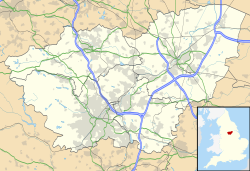| Frickley | |
|---|---|
 All Saints' Church, Frickley | |
Location within South Yorkshire | |
| OS grid reference | SE464082 |
| Civil parish | |
| Metropolitan borough | |
| Metropolitan county | |
| Region | |
| Country | England |
| Sovereign state | United Kingdom |
| Post town | Doncaster |
| Postcode district | DN5 |
| Dialling code | 01977 |
| Police | South Yorkshire |
| Fire | South Yorkshire |
| Ambulance | Yorkshire |
Frickley is a village in the Metropolitan Borough of Doncaster, South Yorkshire, England in the civil parish of Clayton with Frickley. It lies close to the border with West Yorkshire.
Contents
The name Frickley derives from the Old English Fricalēah meaning 'Frica's wood or clearing'. [1]
